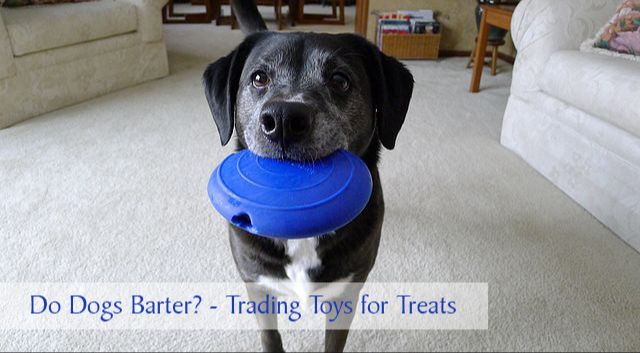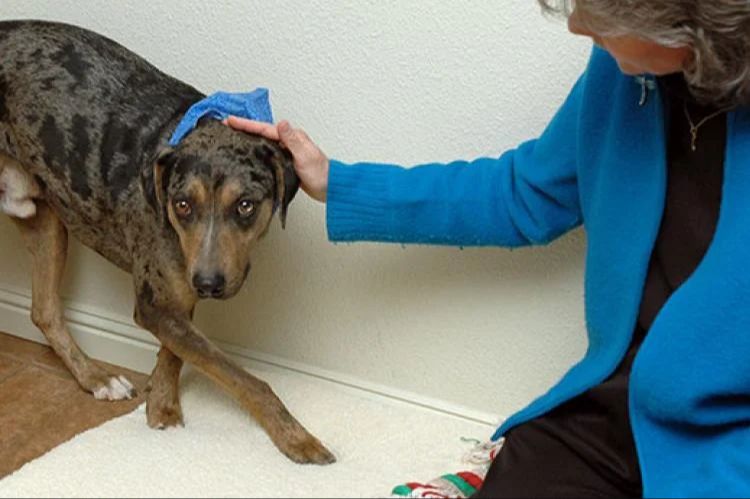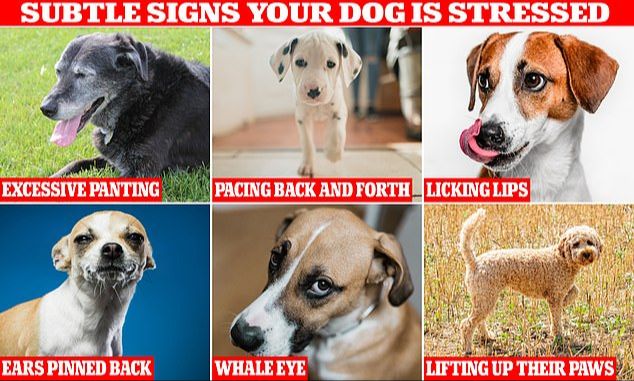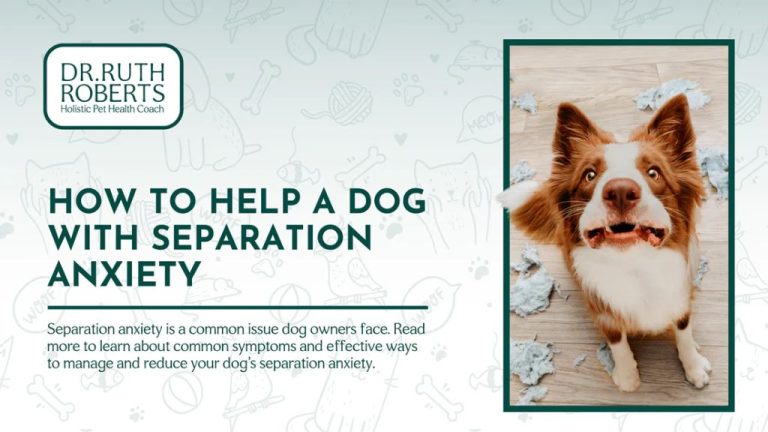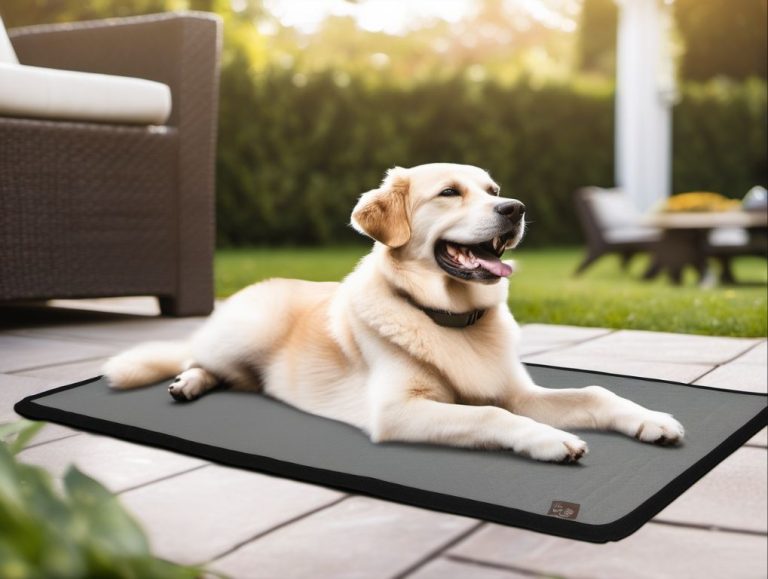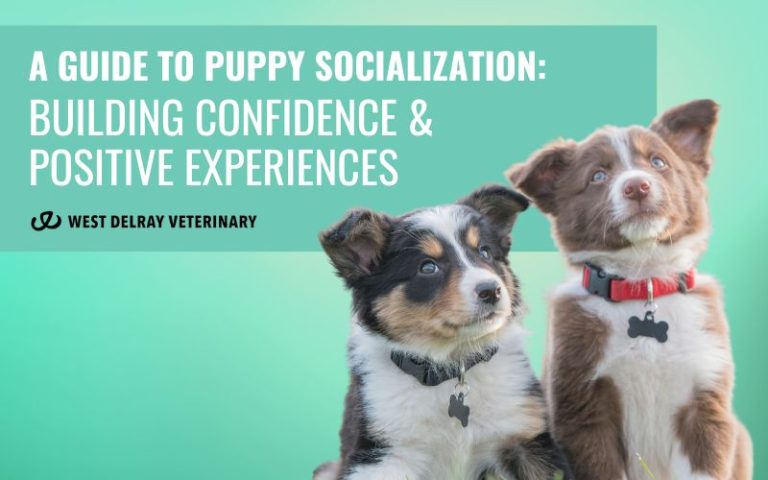Preventing Jumping Up: Training Alternatives For Greeting Behavior
Jumping up is a common behavior issue that many dog owners face. It occurs when a dog stands on its hind legs and puts its front paws on a person as a form of greeting. This is a natural canine behavior, especially for younger dogs, as it brings them closer to your face for licking and sniffing. However, for humans, an exuberant jumping dog can be unwelcome and even dangerous, especially for children, seniors, or those unsteady on their feet. While patience and consistency are key in curbing jumping up, with proper training most dogs can learn more appropriate greeting manners.
Why Dogs Jump
Dogs often jump up when greeting people due to excitement and a desire to say hello. According to Rover, one of the most common reasons dogs jump is to greet people in the same way they greet other dogs. Jumping up is a natural greeting behavior for dogs.
Jumping can also be a way for dogs to seek attention. As explained by Daily Paws, dogs that aren’t getting enough stimulation or playtime might start jumping on people as a way to engage them and get attention. If the dog is rewarded with attention or play after jumping, the behavior is reinforced.
Finally, a lack of training is often behind jumping behaviors. Puppies especially will jump up frequently if not taught early on that four paws on the floor is the preferred behavior for greetings.
Risks of Jumping
Jumping up can pose a variety of risks and problems, including:
- Knocking people over – Jumping up, especially on children, elderly people, or those unsteady on their feet, can knock them over leading to falls or injuries (Source). Even large dogs jumping on fully grown adults can throw them off balance.
- Scratching – Dogs that jump up may accidentally scratch people with their paws or nails, especially children or seniors with sensitive skin (Source). This can lead to cuts, scrapes or even infections.
- Ruined clothing – A muddy or dirty dog that jumps up can stain clothing with dirt, drool, or hair. Their claws may also snag fabric or create pulls or tears.
- Liability with guests – Allowing dogs to jump on guests, even if the owner doesn’t mind, creates liability if someone gets injured or has clothing damaged. This is especially problematic with service professionals like mail carriers, delivery drivers, or contractors (Source).
Jumping up, even in happy greeting, carries risks that responsible owners should manage through training. Avoiding jumping prevents injuries and problems for both dogs and humans.
Set the Ground Rules
The most important first step in training a dog not to jump up is to set firm ground rules. According to the AKC article “How to Stop Your Dog From Jumping Up on People,” you must establish that “no jumping allowed, even when excited” (source). This means not allowing your dog to jump on you, family members, or guests under any circumstances.
Additionally, the ground rules should be “four paws on the floor” at all times according to the AKC article. When greeting people, teach your dog to sit or lay down calmly instead of jumping up. The AKC recommends this simple rule: “If you jump, you don’t get attention. If you sit, you do.” This establishes sitting and staying seated as the expectation for politely greeting people.
By setting and enforcing these ground rules consistently, you can extinguish the jumping habit and teach more appropriate greeting manners. Just be patient, as it may take time and repetition for your dog to fully grasp the new rules.
Redirect With Sit
One of the most effective ways to prevent jumping is to teach your dog to sit instead. By rewarding your dog for sitting calmly, you encourage polite greetings. According to the RSPCA, “Teaching your dog to sit is a great place to start with your training.”
Before giving your dog any attention, ask them to sit first. Say the command “Sit” and wait for them to have their bottom on the floor. If they try to jump up, step back and repeat the command. Once they are sitting, praise them calmly and give pets if desired. The key is to completely ignore them while jumping and only give attention for sitting.
The RSPCA recommends always rewarding the sitting behavior: “Ask for a sit before any attention or fuss is given. This teaches your dog that they will only get attention when they are sitting politely.” With consistency, your dog will learn that sitting gets rewarded while jumping gets ignored.
According to the American Kennel Club, “This command is invaluable for controlling your dog’s exuberance when guests arrive or when you’re out for a walk.” Teaching and rewarding sit prevents jumping up in many daily situations.
Reward Calm Behavior
One of the most effective ways to discourage jumping when greeting and promote calmer behavior is to reward your dog for having four paws on the floor. As soon as you enter through the door, wait until your dog’s feet are planted on the ground before acknowledging them. When they are calmly standing or sitting, praise them or give treats and attention. This reinforces the behavior that you desire (1).
Be sure to do this every time you walk through the door. You can say things like “good four on the floor!” as you reward the calm behavior. It’s important to mark and reward the specific moments when your dog is being calm, as this will help them make the connection. If you reward them while jumping, it could inadvertently reinforce the jumping up. Capturing these moments of calmness when greeting and consistently rewarding them is key (2).
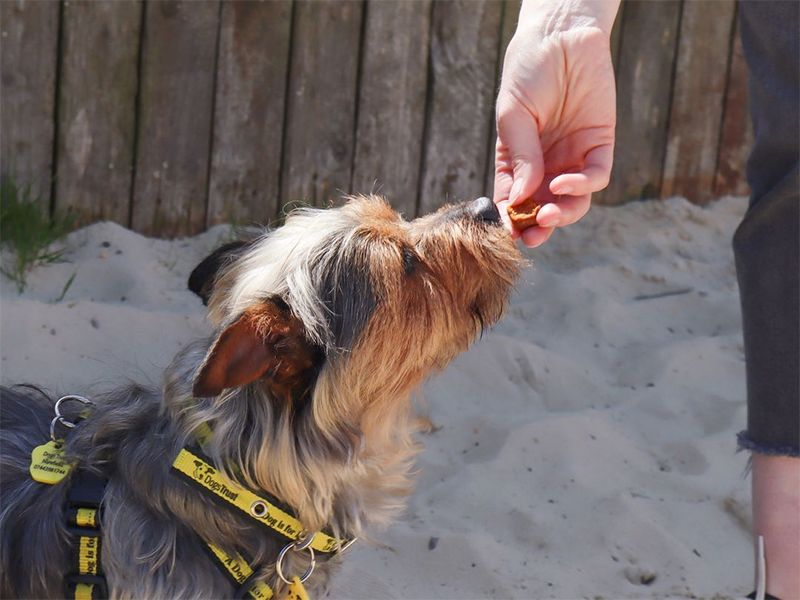
This helps teach your dog that they will get your praise and attention when they greet you calmly, without jumping. With time and consistency, jumping up will become much less rewarding to them than standing or sitting politely.
(1) https://milwaukeepaws.com/how-to-capture-calmness/
(2) http://www.clickertraining.com/node/3320
Avoid Rewarding Jumps
One of the most common mistakes dog owners make is inadvertently rewarding jumping. When a dog jumps up, their goal is typically to get your attention. If you pet them, talk to them, or even look at them while they have their paws on you, this rewards the behavior and will make them more likely to do it in the future.
Instead, it’s important to completely ignore the dog when they jump up. According to dog training experts, “Ignoring, turning away, disengaging, and otherwise not rewarding the jumping is typically enough to reduce the behavior over time.”1 When the dog jumps, immediately turn away and step aside. Withhold all attention until the dog has calmed down and has all four paws on the floor again.
By doing this consistently, the dog will learn that jumping results in the loss of your attention. They will seek out other behaviors that get your praise and affection instead.
Practice Greeting Manners
Greetings are important training opportunities to reinforce calm behavior. When people come over, ask your dog for a sit-stay before petting or giving attention. This teaches your dog to remain seated instead of jumping up in excitement. Reward the dog with praise and a treat for staying seated during greetings.
Ask friends and family to assist with training by ignoring your dog when they first enter until it is calmly seated. They can then reward the dog with gentle pets once sitting. This reinforces the desired greeting behavior. With repetition, the dog will learn to associate visitors with sitting politely. Consistently rewarding calm greetings and ignoring excitable jumping will help curb the undesirable behavior.
Be Consistent
Consistency is key when training a dog not to jump up in greeting. Everyone in the household must follow the same rules and use the same training techniques when interacting with the dog. As the AKC advises, “Dogs are not born understanding English. They are very good at learning words, but need to be taught word meanings very clearly and concisely.” The Importance of Consistency in Training Your Family Dog. Setting clear expectations and responding the same way every time will help the dog learn faster.
In addition, daily repetition of the desired greeting behavior is crucial. As one article explains, “Consistency can provide structure and make your dog less stressed. Consistency isn’t just helpful for making sure your training journey is successful, it also makes the process easier for your pup.” Consistency is Crucial in Dog Training: Here’s How to Make Sure You’re Doing It. With persistent gentle training, the dog will get the message that sitting calmly is the only way to get attention.
Conclusion
In summary, there are several effective techniques to train your dog not to jump up, including redirecting with a sit command, rewarding calm behavior, avoiding reinforcement of jumps, and practicing greetings. The keys are being consistent with training and not rewarding the undesirable jumping behavior. It will take time and daily practice for your dog to break the habit. But with persistence, your dog will learn better manners and stop jumping on people.
The benefits of reducing jumping behavior are well worth the effort. Your dog will be calmer and less likely to knock over children or the elderly. Walks will be more pleasant without pulling on the leash to jump. And you can proudly show off your dog’s newfound manners when guests arrive.

